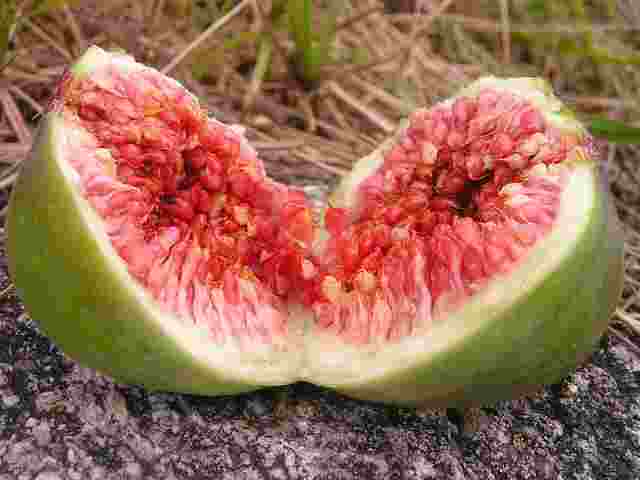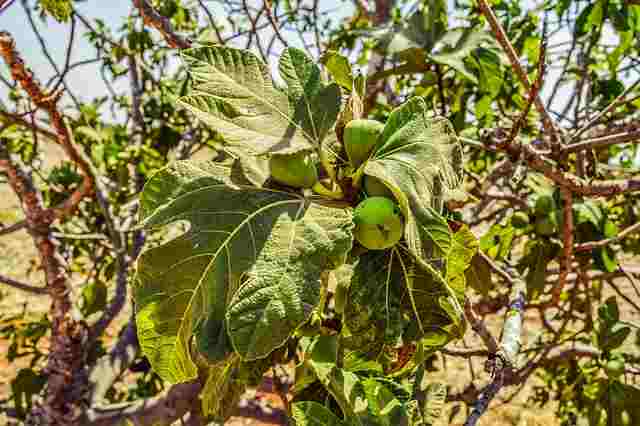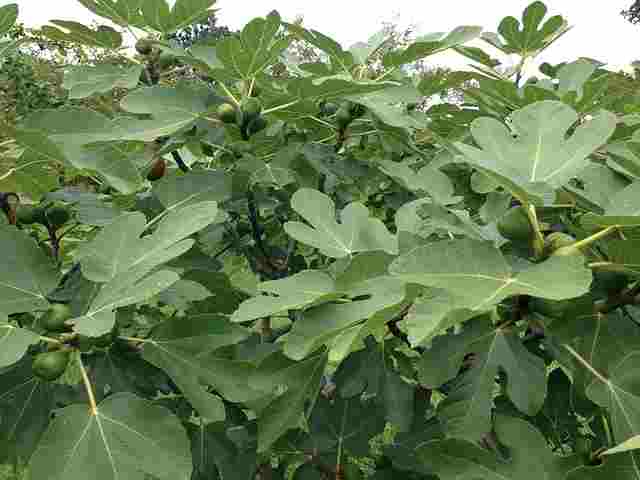Anjeer tree | Fig Farming Step by Step Cultivation
Today we will discuss Fig Plant Project Report / Fig Farming Project Report / Economics of Fig Cultivation
What you will understand in this Fig farming Article
- The anjeer fruit cultivation describes the methods and requirements of fig cultivation
- Details the investments and profits related to anjeer fruit cultivation.
- How will a dried organic anjeer fruit look like?
- How much profit Per acre in fig farming
- Expenses for Fig cultivation
- Fig fruit Price per kg
- anjeer tree Farming and their Market
Export quantities and costs can vary depending on a variety of factors such as seasonality, demand, supply, and production conditions.
However, according to the latest available statistics from the United Nations, the top five fig exporting countries by value in 2020 were:
- Turkey – $133.9 million
- Greece – $30.5 million
- Spain – $29.6 million
- Morocco – $16.3 million
- Tunisia – $8.6 million
Please note that these figures represent the total value of fig exports for each country, not the quantity exported or the price per unit.

Anjeer fruit is an Asian species of flowering plant in the mulberry family. This is commonly called Ficus carica. This plant is native to Central and West Asia. This plant is grown or is grown all over the world either as an ornamental plant or as a fruit-bearing plant. This plant is scenic and has fragrant leaves. Scattered throughout Asia and North America, the plant has now become natural. Spain, Turkey, Egypt, and Algeria are the largest anjeer fruit growers in the world and account for 65% of the total production.
The total production of raw anjeer fruit in the world is more than 1.5 million tons. In India, fig cultivation is mainly done in Gujarat, Maharashtra, Karnataka, Uttar Pradesh, and Tamil Nadu. Total Production of the fig in India around 54000 tonnes in across more than Six Thousand Hectares Area which is almost 9-10 Tonnes production per hectares.
Local Names of Fig fruit (anjeer fruit) in India:-
- In Western County, it is called Fig
- In Gujarati, Marathi, Urdu & Punjabi it is known as Anjeer fruit,
- In Telugu, it is known as Athi pallu
- In Tamil and Malayalam, it is known as Atti pazham
- In Bengali, it is known as Dumoor
- In Oriya, it is known as Dimiri
Varieties of the Fig tree / anjeer tree:-
There are almost 15-20 popular varieties of anjeer fruit that are being cultivated worldwide.
Some popular and important commercial varieties of anjeer fruit cultivated in different countries are
- Black Mission
- Kodota
- Ridriatic
- White Adriatic
- Calimirna
- Kalamon
- Desert King
- Conadira
- Brown Turkey
- Celeste

In India we have the commercial importance varieties of Poona and Dinkar along with economic value are divided into Smirna type which is found especially in Iran. These varieties are called Seh, Sabz, Paves, Shah Anjir.
Types of Fig or Anjeer fruit:-
We have divided this type of fig into 4 different types based on their method of pollination and sex of the anjeer fruit flower.
- Edible anjeer fruit (or) Common Figs: Individual flowers are long-styled pistillate (Pistil meaning the female reproductive part of a flower) and development of fruit without fertilization or seeds. Popular varieties of anjeer fruit are – Brown Turkey Conardia, Kadota, Poona, Mission.
- Wild Figs (or) Capri Figs: These types are functional staminate flowers and short-styled pistillate flowers (Pistil meaning the female reproductive part of a flower), Capri figs are not eatable but grown because it is used for a fence or for support in term of setting fruits and pollination.
- San Pedro Figs: These are intermediate fig types where the first crop is Parthenocarpic, in the first season fruit produced is normal, but the fruit produced in the second season is pollinated by a special tool.
Whether or climate requirement for Fig cultivation
In South India, Marseilles bloom on hills at an altitude of 1,000 feet (1,52,25 m). In the tropics, anjeer fruit usually grow between 2,700 and 5,600 feet (780–1,500 m). The Anjeer tree can survive frosts of 10 ° to 20 at favorable sites. Spring rains should be dry weather with your rains if it is intended to bear fresh fruit. Rainfall during fruit development and growth is harmful to the crop, causing the fruit to germinate. The semi-arid tropical and subtropical regions of the world are suitable for fig-growing if irrigation facilities are available. But too hot, dry will irrigate the fruit even if the plants are getting proper irrigation facility.
Soil requirement for Fig cultivation
Anjeer fruit can be grown on a wide soil; Provides light sand, rich clay, heavy clay or limestone, adequate depth, and food drainage. Dried soils with moderate drying and a good deal of lime are preferred for crop drying. Highly acid soils are unsuitable. The pH range should be between 6.1 to 6.7. The anjeer tree is very tolerant to moderate salinity. Plants grow well in hot and dry winds from April to June.

Propagation methods from mother plant of fig
There are lots of techniques are used for the propagation of figs such as sprouting, hardwood cutting, air laying, and grafting.
- But the most commonly used method of commercial use of Anjeer trees is hardwood cuttings.
- While making cutting make sure the size of hardwood cuttings should be about 25-30 cm long and 0.7 to 0.8 cm thick.
- These cuttings should be taken especially in August after two months of the rainy season for 1.5 to 2-year-old shoots.
- It is then planted in a polyethylene bag with the root mixture.
- The cuttings can also be rooted by dipping in any other moist medium.
- Because cuttings placed under fog usually grow faster (in a month)
Land preparation and how to plant fig plants
- The soil is cultivated and leveled before the Planting roots cut.
- The dimension of pits 2 feet are dug at least a month before planting.
- For the safer side, you can treat the pit with 50-80 g of endosulfan per pit to protect the pits from harmful insect
- The distance between the Anjeer trees is approximately 7 X 7 M but the minimum distance is maintained at 6 x 7m where figs grew in India for good crops.
- These pits are initially filled with a mixture of compost and garden soil and other organic manure.
- Planting depth should not be more than be 3 inches
- Carefully handle the points on the roots to avoid damage to the roots.
- Dig a hole deeper and wider than usual and keep the plants in a straight line.
- The soil around the roots is compacted to pack the roots so that they can come into proper contact with the moist soil.
- It is recommended that the delay of planting until the end of the winter season.
- Rotation or pruning of roots at the time of planting helps to reduce damage to the plants and develops side branches.
You Can read this too- More interesting
- Polyhouse farming 30-40 Lac per acre with Polyhouse Subsidy and Polyhouse cost
- Kiwi Farming, Kiwi fruit Planting, Kiwi plant Cultivation
- Vanilla Orchid,Cultivation, Vanilla plant Information with Income
- Cinnamon Cultivation, Care, Process, Income
- what is horticulture | Definition, Examples, Types, Course
Fertilizers and compost for fig trees
Fertilization of plants mainly depends on the type of soil type because the soil doesn’t have enough nutrients, pH level then according to that doses of fertilizer has to increase in this case,
- Fig trees grow well in alkaline soils where ph. the level is above 6.
- Sometimes it gives Lime as doses to the soil to increase the pH if less than 6
- The composition of fertilizers and compost required at different stages of plant growth
- Usually, plants become more stable after 4.5 years of planting.
Refer to the below chart for fertilization with frequency
| Value in KG for per tree fig cultivation | |||||
| Neem cake | farmyard manure | N (gram) | P (gram) | K (gram) | |
| First Year | 0.4 | 20 | 0.05 | 0.03 | 0.03 |
| Second Year | 0.4 | 20 | 0.11 | 0.07 | 0.07 |
| Third Year | 0.9 | 20 | 0.17 | 0.11 | 0.11 |
| Fourth Year | 1.25 | 25 | 0.23 | 0.15 | 0.15 |
| Fifth Year | 1.7 | 30 | 0.28 | 0.19 | 0.19 |
Irrigation system for Fig plantations
- This Anjeer tree is measured to be very tough to deficiency conditions in most of the cultivated areas are rarely irrigated.
- If the Anjeer tree is planted in a region with light soil and dry conditions, it should be watered frequently during the first two years of planting and also over the dry period.
- Plants should not be heavily irrigated during the fruit growing period
- In Summer Season like in May to June make sure plants get the water in every 5 days intervals
- In winter in Jan to the end of April make sure plants get the water in every 14 to 15 days intervals
- Stop providing water in the rainy season
- Per plant should get at least 18 to 20 liters of water and that also through the drip irrigation system.
Pest and disease management in fig farming
Some of the pests that infection the fig tree are stem borers, beetles, leaf defoliators, scale insects, and fig flies. Insect infection is rare in dried regions with harsh climates. Some insects can cause problems in the field like birds, squirrels, etc. One way to control pests is to beat the drums used in small farms. Bird nets made from plastic or nylon are used to cover the Anjeer trees to protect the birds.
Rust and leaf spot diseases affecting fig tree which can be controlled using chemical fungicides as below
Some measures for disease control of fig tree:
- Destroy the tree and replace the newly suggested varieties.
- Soak the old leaves and burn them completely.
- Cut the diseased plant at ground level and grow a new crop from the suckers.
In addition to pests and diseases, there is also the possibility of sunburn, fruit breakdown, etc. Sunburn can be controlled by placing net shade. It is advisable do not to prune the fig tree in summer because it should not expose the branches in the summer sun. After a long dry period.
Training and pruning of fig trees or anjeer tree
Annual pruning has to be done on the flowers and fruit-bearing branches of the fig tree.
- This pruning technique will help in high production.
- In Indian climatic conditions, light pruning is done in the last week of December.
- Some 3 or 4 buds on the previous growth shoots are left on the seedlings during pruning.
- The main reason to given training because to keep and maintain the height of the trees to a particular limit.
- Just make sure the main stem which is coming from the ground should not grow beyond 3-4 feet after one year of planting.
- So that this pruning will boost the Side shoots which is required to grow in certain limit so that number of branches or side shoot will get more number fig fruit.

Production of figs per acre and when to Harvest fig fruits
Normally fruits are produced 24 months after the planting of the fig tree which we planted as a cutting method But the tree which is grown in seedlings method has to be harvested in the third year of planting because it required 3 years to get fully mature to get quality fruits. Production of this fruit will get an increase in an incremental way in each year till the 8-9 years of the old plant after that their fruit production will remain constant.
The life of a fig tree is considered to be about 30 years.
- The main season of harvest is at the end of summer somewhere between Feb – March – April where fruits can be harvested in the gap of every 2-3 days.
- When the fruit is soft and bends toward the downside, it gives the signal to harvest.
- The production of a fig tree is around 190 to 380 fruits per tree. And if we maintain it in a proper way then we can expect production of fig 4 to 5 tonnes of fruit per acre.
What after Fig Harvest (Fig fruits management)
Figs are perishable by nature so for long-distance transportation, it is not suitable. For long-distance market makes sure fig should be harvest slightly before 2-3 days of fully ripe and for fresh fruits can be sold directly in the nearest local market. Fruits taken at the optimal growth stage are cooled within 6 hours of harvest and can be kept at a temperature of 1 C for 20 days same like fruit which is kept under 10C can be preserved for 7 days and max 20C temperature fruit can be kept for not more than 2 days
For dried fig production this fig treated with 20 g of sulfur smoke per 50 kg of fruit and then dried at 50 to 65 C until the humidity is reduced to about 15%. In this way, dehydration controls to get the brown color.
Not recommending the fig fruit in traditional way sun exposure drying if you are doing it for commercial because this method is a higher risk of pests and other insects.
Profit Analysis from Fig Farming in 1 acre
As you know Price for any of the product in the market vary depending on their demand and supply and also in region based
| Type of expenses in fig cultivation |
Investment 1st year | Investment 2nd year |
| Preparation of Land | 3000 | |
| Planting Materials | 7000 | |
| Labor charges for preparation of pits | 7000 | |
| Fertilizer Cost | 6000 | 6000 |
| Organic Manure cost | 6000 | 6000 |
| Plant protection materials | 2000 | |
| Drip irrigation system | 40000 | |
| Labor charges for weed control, Apply Fertilizer, Harvesting | 6000 | 6000 |
| Supporting material for plant | 1000 | |
| Labor charges for pruning branches | 2500 | 2500 |
| Plant protection chemicals | 2000 | 2000 |
| Misc Cost | 1500 | 3000 |
| Total Cost (1) | 82000 | 27500 |
Now let’s calculate the actual profit from the 1-acre Fig tree farming
Total Production of fig fruit in 1-acre plot = 4 to 4.5 tonnes (4000Kg to 4500 KG)
The current market price is for fig fruit (anjeer price per kg) Rs. 100
Income from 1-acre plot = Total Production x Cost per KG
= 4000 x 100
= Rs. 4, 00,000 lac ($ 5480)
In every farming, we have assumed profit after 2nd years as the first year we just recover our investment from fig cultivation
1st Year profit
400000 – 82000 = RS. 318000 is the net profit
2nd Year profit
400000 – 27500 = RS. 372500 is the net profit
You can even earn more you sell dried Anjeer or fig fruit directly in the local market or super Market but that will be recommended only if you are doing commercial fig farming on more than 3-5 acre land.
You Can learn more about Dried Figs Market – Trends, Growth, Forecast (2020-2025)
5 thoughts on “Anjeer Tree Cultivation | 3-4 L Profit per acre | 2023”
Comments are closed.